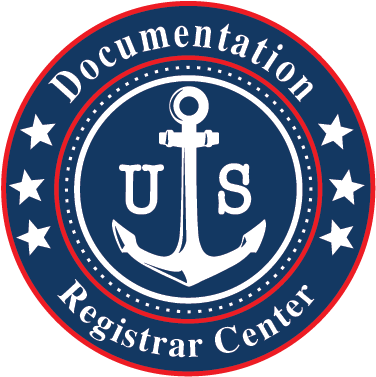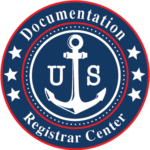4.05-1 Notice of marine casualty.
- Immediately after the addressing of resultant safety concerns, the owner, agent, master, operator, or person in charge, shall notify the nearest Sector Office, Marine Inspection Office or Coast Guard Group Office whenever a vessel is involved in a marine casualty consisting in –
-
-
- An unintended grounding, or an unintended strike of (allision with) a bridge;
- An intended grounding, or an intended strike of a bridge, that creates a hazard to navigation, the environment, or the safety of a vessel, or that meets any criterion of paragraphs (a) (3) through (8);
- A loss of main propulsion, primary steering, or any associated component or control system that reduces the maneuverability of the vessel;
- An occurrence materially and adversely affecting the vessel’s seaworthiness or fitness for service or route, including but not limited to fire, flooding, or failure of or damage to fixed fire-extinguishing systems, lifesaving equipment, auxiliary power-generating equipment, or bilge-pumping systems;
- A loss of life;
- An injury that requires professional medical treatment (treatment beyond first aid) and, if the person is engaged or employed on board a vessel in commercial service, that renders the individual unfit to perform his or her routine duties; or
- An occurrence causing property-damage in excess of $75,000, this damage including the cost of labor and material to restore the property to its condition before the occurrence, but not including the cost of salvage, cleaning, gas-freeing, drydocking, or demurrage.
- An occurrence involving significant harm to the environment as defined in § 4.03-65.
-
-
- Notice given as required by 33 CFR 160.215 satisfies the requirement of this section if the marine casualty involves a hazardous condition as defined by 33 CFR 160.202.
- Except as otherwise required under this subpart, if the marine casualty exclusively involves an occurrence or occurrences described by paragraph (a)(8) of this section, a report made pursuant to 33 CFR 153.203, 40 CFR 117.21, or 40 CFR 302.6 satisfies the immediate notification requirement of this section.
[CGD 94-030, 59 FR 39471, Aug. 3, 1994, as amended by USCG-2000-6927, 70 FR 74676, Dec. 16, 2005; USCG-2006-25556, 72 FR 36330, July 2, 2007; USCG-2011-0618, 76 FR 60754, Sept. 30, 2011; USCG-2014-0688, 79 FR 58275, Sept. 29, 2014; USCG-2005-21869, 80 FR 5336, Jan. 30, 2015; USCG-2016-0748, 83 FR 11902, Mar. 19, 2018]
4.05-2 Incidents involving foreign tank vessels.
- Within the navigable waters of the United States, its territories, or possessions. The marine casualty reporting and investigation criteria of this part apply to foreign tank vessels operating on the navigable waters of the United States, its territories, or possessions. A written marine casualty report must be submitted under § 4.05-10 of this chapter.
- Outside the U.S. navigable waters and within the Exclusive Economic Zone (EEZ). The owner, agent, master, operator, or person in charge of a foreign tank vessel involved in a marine casualty must report under procedures detailed in 33 CFR 151.15, immediately after addressing resultant safety concerns, whenever the marine casualty involves, or results in –
-
-
- Material damage affecting the seaworthiness or efficiency of the vessel; or
- An occurrence involving significant harm to the environment as a result of a discharge, or probable discharge, resulting from damage to the vessel or its equipment. The factors you must consider to determine whether a discharge is probable include, but are not limited to –
-
- Ship location and proximity to land or other navigational hazards;
- Weather;
- Tide current;
- Sea state;
- Traffic density;
- The nature of damage to the vessel; and
- Failure or breakdown aboard the vessel, its machinery, or equipment.
-
-
-
[USCG-2000-6927, 70 FR 74676, Dec. 16, 2005]
4.05-5 Substance of marine casualty notice.
The notice required in § 4.05-1 must include the name and official number of the vessel involved, the name of the vessel’s owner or agent, the nature and circumstances of the casualty, the locality in which it occurred, the nature and extent of injury to persons, and the damage to property.
[CGD 76-170, 45 FR 77441, Nov. 24, 1980]
4.05-10 Written report of marine casualty.
- The owner, agent, master, operator, or person in charge must, within 5 days, file a written report of any marine casualty required to be reported under § 4.05-1. This written report is in addition to the immediate notice required by § 4.05-1. This written report must be delivered to a Coast Guard Sector Office or Marine Inspection Office. It must be provided on Form CG-2692 (Report of Marine Casualty, Commercial Diving Casualty, or OCS-Related Casualty), and supplemented as necessary by appended Forms CG-2692A (Barge Addendum), CG-2692B (Report of Mandatory Chemical Testing Following a Serious Marine Incident Involving Vessels in Commercial Service), CG-2692C (Personnel Casualty Addendum), and/or CG-2692D (Involved Persons and Witnesses Addendum).
- If filed without delay after the occurrence of the marine casualty, the report required by paragraph (a) of this section suffices as the notice required by § 4.05-1(a).
[CGD 94-030, 63 FR 19192, Apr. 17, 1998, as amended by USCG-2006-25556, 72 FR 36330, July 2, 2007; USCG-2016-0748, 83 FR 11902, Mar. 19, 2018]
4.05-12 Alcohol or drug use by individuals directly involved in casualties.
- For each marine casualty required to be reported by § 4.05-10, the marine employer shall determine whether there is any evidence of alcohol or drug use by individuals directly involved in the casualty.
- In the written report (Forms CG-2692 and CG-2692B) submitted for the casualty, the marine employer must include information that –
-
-
- Identifies those individuals for whom evidence of drug or alcohol use, or evidence of intoxication, has been obtained; and,
- Specifies the method used to obtain such evidence, such as personal observation of the individual, or by chemical testing of the individual.
-
-
- An entry shall be made in the official log book, if carried, pertaining to those individuals for whom evidence of intoxication is obtained. The individual must be informed of this entry and the entry must be witnessed by a second person.
- If an individual directly involved in a casualty refuses to submit to, or cooperate in, the administration of a timely chemical test, when directed by a law enforcement officer or by the marine employer, this fact must be noted in the official log book, if carried, and in the written report (Forms CG-2692 and CG-2692B), and shall be admissible as evidence in any administrative proceeding.
[CGD 84-099, 52 FR 47534, Dec. 14, 1987, as amended by USCG-2016-0748, 83 FR 11902, Mar. 19, 2018]
4.05-15 Voyage records, retention of.
- The owner, agent, master, or person in charge of any vessel involved in a marine casualty shall retain such voyage records as are maintained by the vessel, such as both rough and smooth deck and engine room logs, bell books, navigation charts, navigation work books, compass deviation cards, gyro records, stowage plans, records of draft, aids to mariners, night order books, radiograms sent and received, radio logs, crew and passenger lists, articles of shipment, official logs and other material which might be of assistance in investigating and determining the cause of the casualty. The owner, agent, master, other officer or person responsible for the custody thereof, shall make these records available upon request, to a duly authorized investigating officer, administrative law judge, officer or employee of the Coast Guard.
- The investigating officer may substitute photostatic copies of the voyage records referred to in paragraph (a) of this section when they have served their purpose and return the original records to the owner or owners thereof.
4.05-20 Report of accident to aid to navigation.
Whenever a vessel collides with a buoy, or other aid to navigation under the jurisdiction of the Coast Guard, or is connected with any such collision, it shall be the duty of the person in charge of such vessel to report the accident to the nearest Officer in Charge, Marine Inspection. No report on Form CG-2692 is required unless one or more of the results listed in § 4.05-1 occur.
[CGD 74-119, 39 FR 33317, Sept. 17, 1974, as amended by CGD 88-070, 53 FR 34533, Sept. 7, 1988]
4.05-25 Reports when state of war exists.
During the period when a state of war exists between the United States and any foreign nation, communications in regard to casualties or accidents shall be handled with caution and the reports shall not be made by radio or by telegram.
4.05-30 Incidents involving hazardous materials.
When a casualty occurs involving hazardous materials, notification and a written report to the Department of Transportation may be required. See 49 CFR 171.15 and 171.16.
[CGD 76-170, 45 FR 77441, Nov. 24, 1980]
4.05-35 Incidents involving nuclear vessels.
The master of any nuclear vessel shall immediately inform the Commandant in the event of any accident or casualty to the nuclear vessel which may lead to an environmental hazard. The master shall also immediately inform the competent governmental authority of the country in whose waters the vessel may be or whose waters the vessel approaches in a damaged condition.
[CGD 84-099, 52 FR 47534, Dec. 14, 1987]
4.05-40 Alternate electronic means of reporting.
The Commandant may approve alternate electronic means of submitting notices and reports required under this subpart.
[USCG-1999-6216, 64 FR 53223, Oct. 1, 1999]

